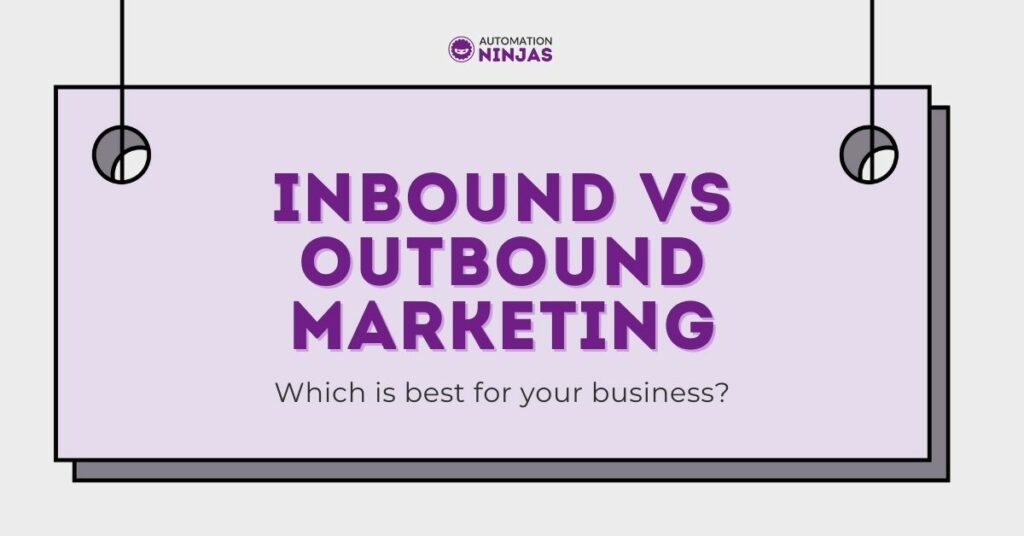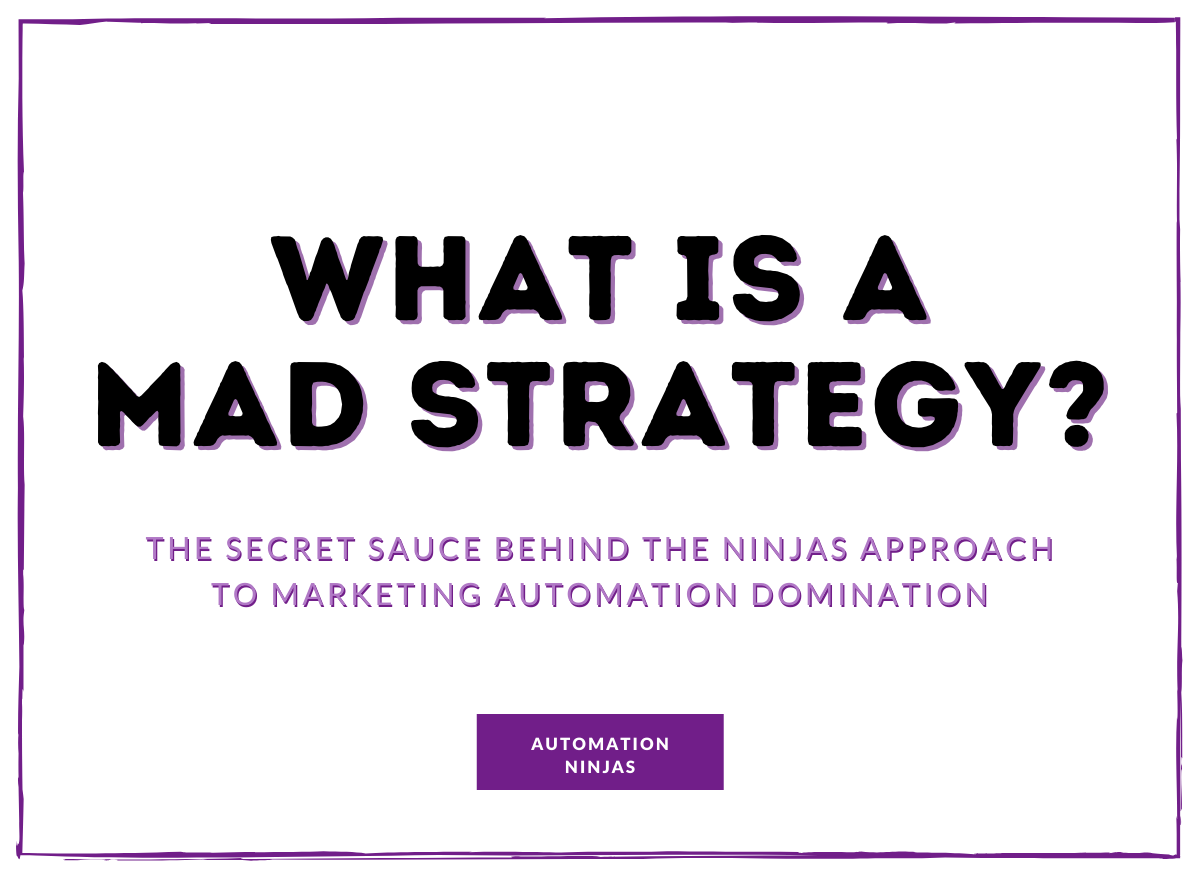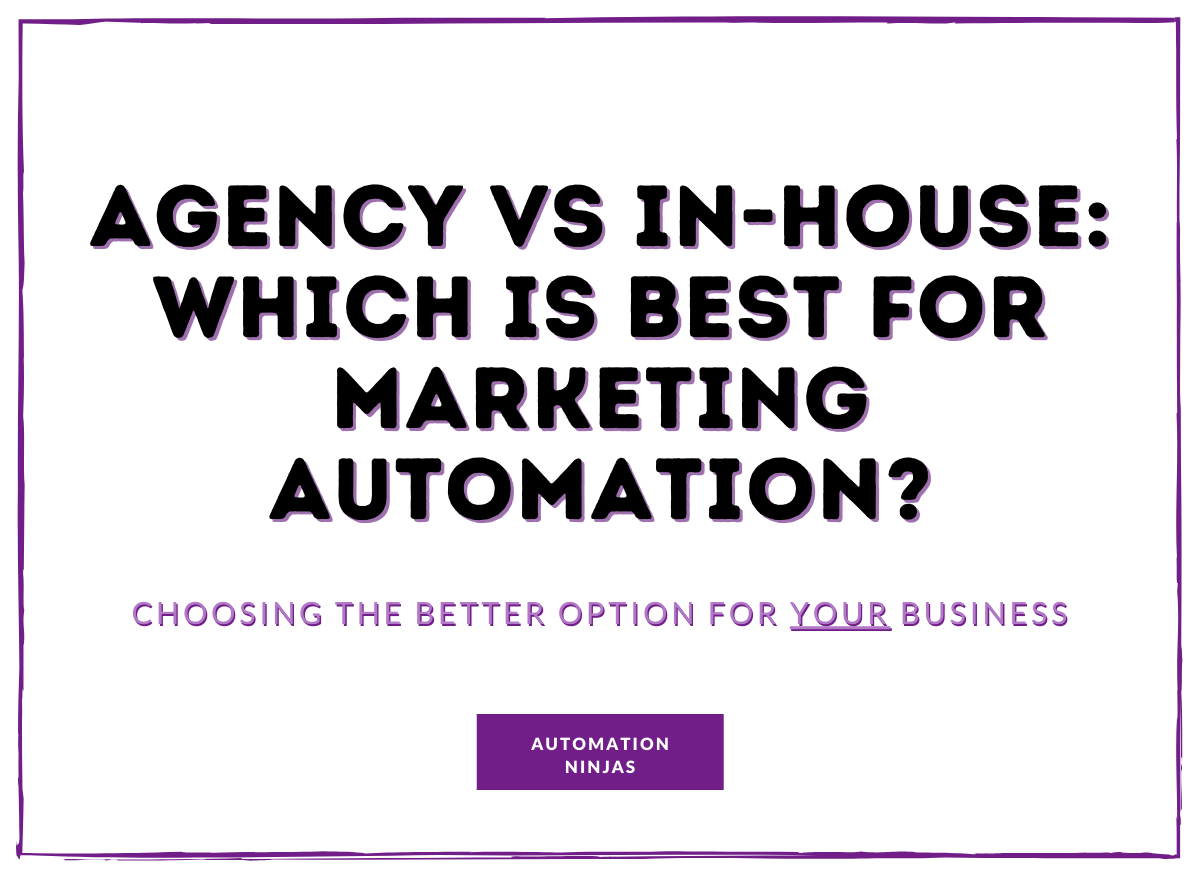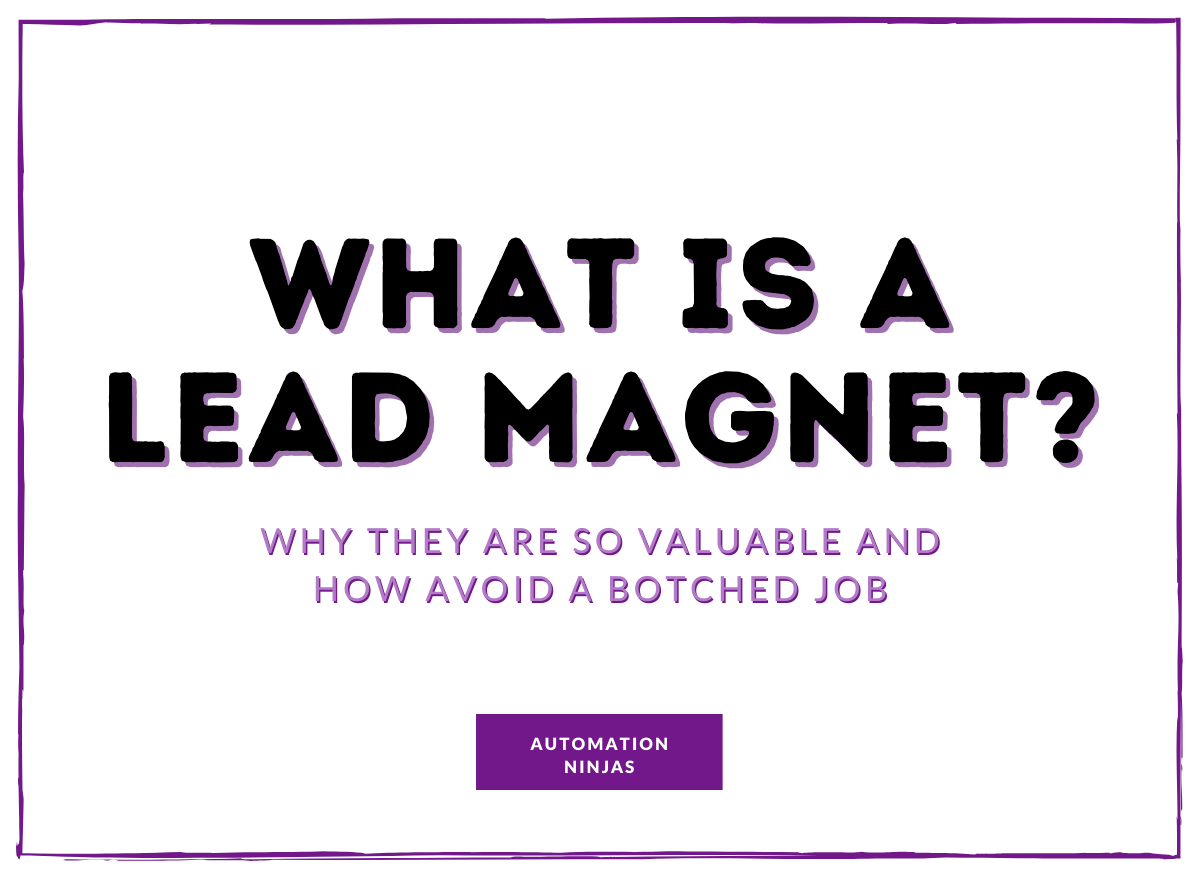When you think of marketing, what springs to mind?
Admit it, Don Draper, daytime whisky and huge advertising budgets 
And yes, that is one side of marketing (although there is certainly a lot less daytime drinking at Ninja HQ - unless you count tea).
However it’s just one element of the marketing mix, and there are other ways to bring in leads to your business - many of which are more cost-effective than nationwide TV campaigns.
In fact, alternative inbound marketing strategies are what we are truly passionate about at Automation Ninjas.
But that doesn’t mean we can’t see the benefits and value in both inbound and outbound marketing.
So, in this blog, we explore the differences between inbound and outbound marketing, so that you can decide which is best for your business.

Don Draper
Inbound vs outbound marketing: the differences
In order to know which one is best for your business, or this stage of your business it’s a good idea to understand the differences, examples of each and how they can be applied.
What exactly is Inbound marketing?
Firstly, let’s start with a definition from HubSpot:
“Inbound marketing is a business methodology that attracts customers by creating valuable content and experiences tailored to them. Inbound marketing forms connections they are looking for and solves problems they already have.”
That word connection is really important - as it really gets to the core of what inbound marketing is all about.
Consumers today have access to more information than ever before. They can find out the answer to almost anything at the press of a button, and more so they want to do this.
They want to be armed with the information that empowers them to make their own decisions. As businesses, it’s our job to provide this information to our potential consumers, and through this form a connection.
There are four stages through which you can integrate inbound marketing into your marketing automation strategy:
1. Attract
2. Engage
3. Sell
4. Wow
But what exactly does the inbound content look like within each stage of your marketing journey.
Examples of inbound marketing…
Let’s take a look at some different examples of inbound marketing in practice so that you know how to apply them to your business:
- Blogs
- Videos (explainer, humorous)
- Social media campaigns
- Search Engine Optimisation
- Lead magnets (i.e. eBooks, buyers guides, coupons)
- Webinars
- Opt-in email marketing (after a lead magnet/newsletter)
The benefits of inbound marketing…
There are loads of amazing benefits of inbound marketing, and it’s one of the reasons that we are so passionate about implementing it for businesses.
But the most impressive one which we’ve already talked about is that it gives your potential customers the information they need on their terms. It allows you to tap into the Zero Moment of Truth (ZMOT), and meet your potential consumers at the point they start their research.
ZMOT Definition: The Zero Moment Of Truth refers to the moment in the buying process when the consumer researches a product prior to purchase. Learn more - https://bit.ly/3nbND5c
This means that they are able to research to their heart’s content, be it via blogs, videos or webinars, and get in touch with you when they are ready to progress further.
So, what does this mean for you as a business?
There are multiple ways that encouraging your potential customers to do their own research upfront can benefit your business:
- Attract your ideal clients
- Pre-qualified leads (only people who are right will get in touch)
- Increased trust with potential customers
- Transparency (especially in low-trust industries)
- Allows you to nurture customer relationships
Inbound marketing is also a great way to strategically communicate with your ideal customers. The content and marketing that you create will not be tailored to people that you are not interested in working with. While you have little control over who will consume it, you can ensure that it will resonate with the right people.
Plus, as well as being highly effective, it’s also a more cost-effective manner of marketing. Businesses that acquire leads via inbound marketing have a lead cost of 61% less than those that do outbound marketing.
The disadvantages of inbound marketing
We are massive advocates of inbound marketing, so surely we wouldn’t have a bad thing to say about it?
Well, of course, we know it’s not perfect - nothing is.
And the main “disadvantage” of inbound marketing is that it takes time 
It’s not a silver bullet, and it won’t transform your business overnight. Not necessarily a negative, but not what some people want to hear.
You have to create a lot of quality and strategic content and ensure that your ideal customers see it in order for it to have an effect on your business.
Of course, that’s not to say that it can’t have an impact almost instantly, and we’ve had many clients who have started seeing leads almost immediately. However, generally speaking, it will be a few months before you start to reap the rewards of the inbound marketing seeds.
So, it requires a little bit of trust in the process. You will have to keep going even if you feel like you are not seeing any immediate results.
It’s also a never-ending process, even when you think that you’re done there will likely be more content to create. This is great, as it creates a constant stream of inbound marketing, however, it is time-consuming.
What exactly is outbound marketing?
Next up is outbound marketing:
Outbound marketing is where a company makes the initial first contact with its audience and potential customers.
Basically, it’s what most people think of when they think of marketing (back to that Don Draper image again).
It’s interruption-based ie. you are interrupting their daily lives with a message rather than waiting for them to come and find you.
It can be a much more expensive method of marketing, however, it’s estimated that businesses spend as much as 90% of their marketing budget on outbound marketing.
Whether this is the right decision we will discuss in a little more detail…
Examples of outbound marketing
So, what are some examples of outbound marketing that you might be familiar with?
- Cold calling
- TV advertising
- Radio advertising
- Trade shows
- Print media
- Social media advertising (i.e. Facebook ads)
- Spam email
- Direct mail
The benefits of outbound marketing…
I’m sure if you have a think you’ll be able to come up with at least a few examples of outbound marketing from large corporations. We’ve all seen adverts from companies such as McDonald’s, Nike and Adidas.
This is because adverts and other forms of outbound marketing can be massively beneficial when it comes to consumer awareness. And this can bring in a lot of leads and sales, as it plays into consumer biases that rely on awareness.
However, that is generally for the more traditional forms of outbound marketing such as television, radio and print.
What about companies that don’t have as big a budget?
Newer forms of advertising such as email and social media advertising can be much less expensive, and more targeted.
When we think about traditional advertising, it’s sort of a shotgun approach. While it can be aimed in a general direction, it’s relatively haphazard. However, advancements in technology mean that advertising is becoming increasingly targeted.
Ever Googled something then suddenly been bombarded with adverts?
Yup, that’s your phone and Google tracking you and showing you relevant ads.

Google tracking knows all...
This is extremely useful for companies and ensures that as consumers we only see relevant and interesting adverts. It allows businesses to get crazy specific with the type of people that they want to target through advertisements, and for a relatively low cost.
Many traditional media such as television, radio and print are outwith the budget of many small businesses. But new technology combined with social media has given small businesses amazing targeting capabilities for a fraction of the cost of a television advert.
Relatively speaking, traditional outbound media can have a massive reach, that can increase awareness and lead to many leads and sales.
The disadvantages of outbound marketing…
Did you know that the average human is inundated with at least 2,000 outbound marketing messages every day?
That’s a whole lot of messages vying for your potential customer’s attention and outbound marketing is only piling on to an increasingly noisy marketplace.
And, new technology is developing even more creative ways to block out these traditional methods of marketing, especially with the most recent IOS updates.
People are finding new ways to avoid the efforts of marketing professionals via outbound means, and are much less trusting of them than they have been previously.
Plus, despite more money being funnelled into outbound marketing than other types, HubSpot suggests that it is 61% more expensive to acquire leads via outbound marketing than from inbound marketing.
It can be very successful, however, outbound marketing is expensive, and is becoming less effective with distrusting consumers.
Inbound vs Outbound Marketing: which is best for your business?
So which is better for your business?
We’re not saying that one is necessarily better than the other, you might want to employ both.
In fact, if you have an excellent inbound lead strategy in place, then supplementing it with outbound marketing (especially in the early stages), may be a great way to build traffic and leads.
An inbound strategy is great, but alone, it might take too long to implement - you might need some quick wins.
An outbound strategy alone might not be enough - unless you have a HUGE budget, which most small businesses don’t have.
But a combination of the two might work perfectly…
For example, rather than just writing a lead magnet, or sticking on some Facebook ads you could combine them into a really successful, targeted approach.
For example, if you have a blog or video that is performing well, you could use Facebook ads to retarget interested parties and drive them towards a lead magnet.
This utilises the interest that you have already garnered via inbound marketing - but amplifies it with outbound marketing. And has the added bonus of collecting emails so that you can continue to nurture this relationship via further communication.
We believe that a strong inbound strategy should form the foundations of your marketing strategy. Once you have that in place, you can use advertising and other outbound strategies to build on those foundations.
Whatever you choose to do it needs to be part of a wider strategic plan. One blog or a couple of boosted posts are unlikely to transform your business in the way that you want it to.
Ready for some help with your inbound marketing?
Ultimately we believe that building a strong inbound marketing strategy is essential to any small business, and it’s something that we are really passionate about helping our customers implement.
If you want some help with your marketing strategy, then get in touch today.






